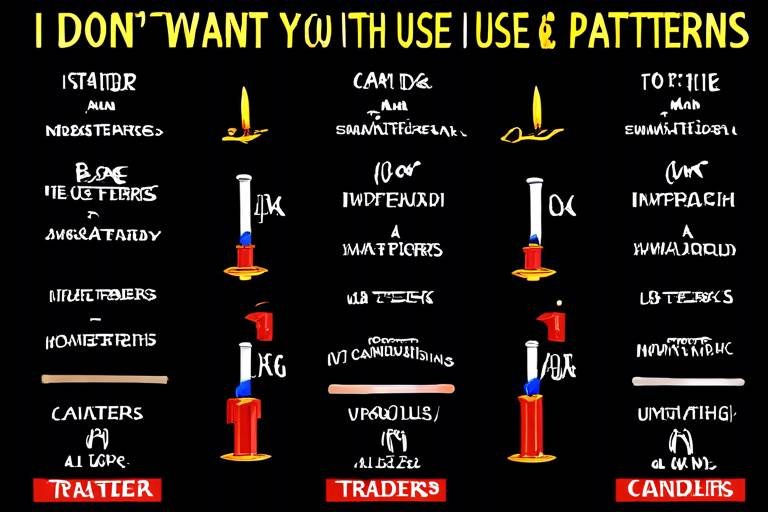How to Avoid Getting Caught in Pump-and-Dump Schemes
In the fast-paced world of investing, it’s crucial to stay vigilant and informed. Pump-and-dump schemes can be likened to a mirage in the desert; they may seem enticing and promising, but they often lead to disappointment and financial loss. These schemes prey on unsuspecting investors, enticing them with inflated stock prices driven by false rumors and deceptive tactics. To navigate this treacherous landscape, one must be equipped with knowledge and strategies to recognize and avoid these traps. This article explores effective strategies to help investors recognize, avoid, and protect themselves from pump-and-dump schemes, ensuring safer investment practices and greater financial security.
At its core, a pump-and-dump scheme is a fraudulent practice where the price of a stock is artificially inflated through false and misleading statements. Think of it as a balloon being blown up; it may look impressive, but once it reaches its limit, it pops, leaving chaos in its wake. The perpetrators of these schemes often use social media, newsletters, or even cold calls to spread hype about a particular stock, creating a frenzy among investors. Once the price has been pumped up, they sell off their shares at a profit, leaving the unsuspecting investors holding worthless stocks when the price crashes. Understanding how these schemes operate is the first step in protecting yourself from their fallout.
Being able to identify the red flags of pump-and-dump schemes is crucial for any investor. Just like a seasoned detective looks for clues, you too must be vigilant in your analysis. Here are some common indicators that may suggest a stock is being manipulated:
- Unusual Trading Volume: A sudden spike in trading volume can be a strong indicator of manipulation. If you notice that a stock is trading far more than usual, it’s time to dig deeper.
- Social Media Hype: If a stock is being excessively promoted on social media platforms, it’s essential to assess the credibility of the information being shared.
- Pressure Tactics: Be wary of aggressive sales tactics, as they often signal manipulation. Take your time to evaluate any investment opportunity.
One of the most telling signs of a potential pump-and-dump scheme is unusual trading volume. Imagine you’re at a concert, and suddenly the crowd goes wild for a particular song—this is akin to a stock experiencing a sudden surge in trading activity. Such spikes can indicate that something is amiss, often driven by hype rather than solid fundamentals. To interpret these trading patterns effectively, you can use various analytical tools and platforms that track stock performance. Always ask yourself: is there a legitimate reason for this surge, or is it just smoke and mirrors?
In today's digital age, social media can be a double-edged sword. While it provides a platform for genuine discussions and insights, it can also be a breeding ground for misinformation. When you see a stock being heavily promoted on platforms like Twitter or Reddit, approach it with caution. It's essential to critically assess the information being shared and consider the source. Just because a stock is trending doesn't mean it's a sound investment. Remember, hype can fade as quickly as it appears, leaving you with losses instead of gains.
Have you ever felt rushed to make a decision? That’s a classic tactic used in pump-and-dump schemes. Perpetrators often employ aggressive sales strategies to create a sense of urgency, pushing investors to buy before they miss out. This is a red flag! Take a step back and give yourself time to think. Genuine opportunities will still be there tomorrow. By resisting the pressure, you can make more informed decisions and protect your hard-earned money.
The importance of thorough research cannot be overstated when it comes to investing. Think of it as preparing for a big exam; you wouldn’t walk in without having studied, right? Similarly, you should never invest in a stock without understanding its fundamentals. This means looking into the company’s financial health, market position, and industry trends. Utilize financial news websites, stock analysis tools, and company reports to gather information. The more informed you are, the better equipped you’ll be to spot potential scams.
Now that you know how to recognize the signs of pump-and-dump schemes, let’s talk about protecting your investments. Implementing protective strategies can safeguard your financial future and enhance your investment approach.
Diversification is like having a well-balanced diet; you wouldn’t eat just one type of food every day, would you? Similarly, spreading your investments across various assets can help mitigate risks associated with individual stocks. By diversifying, you create a buffer against potential losses, ensuring that if one investment doesn’t perform well, others may compensate for it. Consider investing in different sectors, asset classes, and even geographical regions to create a robust portfolio.
Imagine you’re on a rollercoaster, and you can pull a lever to stop the ride at any moment. That’s essentially what a stop-loss order does for your investments. These orders allow you to set a predetermined price at which your shares will be sold if the stock price drops, limiting your losses in volatile markets. By effectively using stop-loss orders, you can maintain greater control over your investments and avoid the emotional rollercoaster that often accompanies stock trading.
Q: What is a pump-and-dump scheme?
A: A pump-and-dump scheme is a fraudulent practice where the price of a stock is artificially inflated through misleading statements, allowing perpetrators to sell at a profit.
Q: How can I recognize a pump-and-dump scheme?
A: Look for unusual trading volume, excessive social media hype, and aggressive sales tactics as potential warning signs.
Q: What should I do if I suspect a stock is part of a pump-and-dump scheme?
A: Conduct thorough research, avoid making impulsive decisions, and consider consulting with a financial advisor.
Q: How can I protect my investments?
A: Diversify your portfolio and use stop-loss orders to limit potential losses in volatile markets.

Understanding Pump-and-Dump Schemes
This article explores effective strategies to help investors recognize, avoid, and protect themselves from pump-and-dump schemes, ensuring safer investment practices and greater financial security.
Pump-and-dump schemes are a deceptive practice that can leave investors reeling and their portfolios in tatters. At their core, these schemes involve artificially inflating the price of a stock through false information and misleading hype. Once the price has been pumped up sufficiently, the perpetrators sell their shares at a profit, leaving unsuspecting investors holding the bag when the stock price plummets. It's a classic case of "buy high, sell low," but the twist is that the high was never real to begin with.
These schemes often target penny stocks or low-priced shares that are thinly traded, making them easier to manipulate. The perpetrators exploit the lack of information and the emotional drive of inexperienced investors who are lured in by promises of quick riches. Imagine being at a carnival where the barker is shouting about a fantastic prize, but once you step inside, you realize it was all smoke and mirrors. That's precisely how pump-and-dump schemes operate.
To truly understand the impact of these schemes, it's essential to consider who gets hurt. When the stock price is artificially inflated, many investors jump in, excited by the prospect of making a quick buck. However, once the schemers sell off their shares, the price crashes, and those who bought in at the peak are left with substantial losses. This cycle not only affects individual investors but can also tarnish the reputation of legitimate companies and the stock market as a whole.
Here’s a quick breakdown of how a typical pump-and-dump scheme unfolds:
| Step | Description |
|---|---|
| 1 | Promotion of a low-priced stock through misleading information. |
| 2 | Increased trading volume as investors buy into the hype. |
| 3 | Perpetrators sell their shares at the inflated price. |
| 4 | Stock price crashes, leaving latecomers with significant losses. |
Understanding the mechanics of these schemes is crucial for any investor. By recognizing the signs and knowing how to protect yourself, you can steer clear of these financial pitfalls. Remember, if something sounds too good to be true, it probably is. So, keep your wits about you and always do your due diligence before investing your hard-earned money.
Identifying the red flags of pump-and-dump schemes is crucial. This section covers common indicators that may suggest a stock is being manipulated, helping investors make informed decisions.
A sudden spike in trading volume often signals interest generated by manipulation. This subsection discusses how to interpret trading patterns and recognize potential red flags.
Increased promotion on social media platforms can indicate a pump-and-dump scheme. This section explores how to critically assess information shared online and avoid falling for hype.
Aggressive sales tactics can be a sign of manipulation. This subsection details how to spot these tactics and the importance of taking time before making investment decisions.
Conducting thorough research is key to avoiding scams. This section emphasizes the importance of due diligence in evaluating a stock's fundamentals and market position.
Implementing protective strategies can safeguard your investments against pump-and-dump schemes. This section outlines effective methods to minimize risk and enhance your investment approach.
Diversification can help mitigate risks associated with individual stocks. This subsection explains how spreading investments across various assets can provide a buffer against potential losses.
Stop-loss orders can limit losses in volatile markets. This section discusses how to effectively use these orders as a protective measure against sudden price drops.
- What is a pump-and-dump scheme? A pump-and-dump scheme is a fraudulent practice where the price of a stock is artificially inflated through false or misleading statements, allowing the perpetrators to sell at a profit.
- How can I identify a pump-and-dump scheme? Look for unusual trading volumes, excessive hype on social media, and aggressive sales tactics as potential warning signs.
- What should I do if I suspect a pump-and-dump scheme? Conduct thorough research, avoid making impulsive decisions, and consider consulting with a financial advisor.

Recognizing Warning Signs
When it comes to investing, being aware of the warning signs of pump-and-dump schemes can be your best defense. These schemes often prey on unsuspecting investors, and recognizing the indicators early can save you from significant financial loss. So, what should you be on the lookout for? Let's dive into some of the most common red flags that can signal a stock is being manipulated.
First and foremost, a sudden spike in trading volume is a classic warning sign. If you notice that a stock's trading volume has increased drastically without any apparent reason—like a major company announcement or earnings report—this could indicate that something fishy is going on. Manipulators often create a buzz around a stock by artificially inflating its price through heavy trading, making it appear more attractive to unsuspecting investors. It’s like a magician pulling a rabbit out of a hat; the trick is all about creating an illusion.
Another crucial aspect to consider is the role of social media hype. In today's digital age, social media platforms are rife with influencers and self-proclaimed experts who can sway public opinion with just a few posts. If you find that a stock is receiving an unusual amount of promotion on social media, particularly from accounts that lack credibility or have no established track record, proceed with caution. It's essential to critically assess the information shared online. Just because a stock is trending doesn’t mean it’s a sound investment. Think of it as a party; just because everyone is talking about it doesn’t mean it’s worth attending.
Moreover, be wary of pressure tactics employed by promoters. If you feel rushed or pressured to invest quickly, it’s a huge red flag. Manipulators often use aggressive sales techniques to create a sense of urgency, making you feel like you’ll miss out on a golden opportunity. Always remember, a good investment doesn’t need to be rushed. Take your time, do your due diligence, and make informed decisions. The best investments are made with a clear head and a solid plan, not in the heat of the moment.
In summary, recognizing these warning signs is essential for protecting your investments. By staying vigilant and informed, you can better navigate the often turbulent waters of the stock market. Remember, if something seems too good to be true, it probably is. Trust your instincts, do your research, and never hesitate to walk away from an investment that raises your suspicions.

Unusual Trading Volume
When it comes to investing, one of the most telling signs of a potential pump-and-dump scheme is . Now, you might be wondering, what does that really mean? Well, think of trading volume as the heartbeat of a stock. Just like a sudden spike in heart rate can indicate something unusual happening in your body, a sudden surge in trading volume can signal that something fishy is going on with a stock. Typically, stocks have a consistent trading volume, but when you see a stock's volume suddenly skyrocket, it's time to raise your eyebrows and do some digging.
This spike often occurs when a group of investors starts to promote a stock heavily, creating a buzz that draws in unsuspecting retail investors. For example, let’s say a stock usually trades around 50,000 shares daily, but suddenly it jumps to 500,000 shares in a single day. This dramatic increase can be a red flag, indicating that the stock may be artificially inflated due to manipulation. It's essential to analyze these patterns over time and not just take a single day’s volume as a definitive sign.
To better understand how to interpret trading patterns, consider the following key points:
- Historical Context: Compare the current volume to the average volume over the past month or year. A significant deviation from the norm is a critical indicator.
- Price Movement: Watch how the stock price reacts to changes in volume. If the price is rising sharply alongside increased volume, it could be a manipulation tactic.
- News Correlation: Investigate whether there’s any legitimate news or events that could explain the volume spike. If there’s no clear reason, it’s time to be cautious.
Moreover, understanding the context of these volume changes can help you differentiate between legitimate market interest and manipulative tactics. Sometimes, a stock may see increased volume due to positive earnings reports or new product launches. However, when the volume increase is accompanied by dubious promotions or unverifiable claims, it’s a classic sign of a pump-and-dump scheme. Always remember: if it seems too good to be true, it probably is!
In conclusion, keeping an eye on trading volume is essential for any savvy investor. By being vigilant and analyzing unusual trading patterns, you can protect yourself from falling victim to these manipulative schemes. As they say, knowledge is power—so stay informed and invest wisely!

Social Media Hype
In today’s digital age, social media has become a powerful tool for communication, but it can also be a breeding ground for pump-and-dump schemes. Imagine scrolling through your feed and suddenly coming across a post that claims a particular stock is the next big thing, promising huge returns overnight. Sounds enticing, right? However, this kind of hype can often be a red flag. When you see a surge of excitement surrounding a stock on platforms like Twitter, Reddit, or Facebook, it’s crucial to approach it with a healthy dose of skepticism.
Social media hype often leverages FOMO (fear of missing out) to lure unsuspecting investors. The posts may be filled with exaggerated claims and flashy graphics, creating a sense of urgency that can cloud your judgment. Here’s the kicker: many of these promotions are orchestrated by individuals or groups looking to inflate the stock price artificially. Once the price reaches a certain point, they sell off their shares, leaving the new investors holding the bag when the price inevitably crashes.
To navigate this treacherous landscape, consider the following tips:
- Verify Sources: Always check the credibility of the information before acting on it. Look for reputable news outlets or financial analysts discussing the stock.
- Analyze the Fundamentals: Don’t let social media buzz overshadow the importance of a stock’s fundamentals. Analyze earnings reports, market trends, and company news.
- Be Wary of Overhyped Stocks: If a stock is getting excessive attention online without any substantial backing, it’s time to dig deeper.
Additionally, remember that the anonymity of the internet can make it easy for scammers to manipulate information. They can create fake accounts or use bots to amplify their messages, making it seem like there’s genuine interest in a stock. This is where your critical thinking skills come into play. Ask yourself: is the excitement around this stock based on solid information, or is it just a smoke screen?
In conclusion, while social media can be a great source of information and community, it’s essential to remain vigilant. By understanding the dynamics of social media hype and how it can be used in pump-and-dump schemes, you can better protect yourself from falling victim to these manipulative tactics. Always remember, if something sounds too good to be true, it probably is!
- What are pump-and-dump schemes? Pump-and-dump schemes are fraudulent practices where the price of a stock is artificially inflated through false or misleading statements, allowing perpetrators to sell at a profit.
- How can I recognize a pump-and-dump scheme? Look for unusual trading volume, aggressive promotional tactics, and a lack of credible information supporting the stock's value.
- What should I do if I suspect a stock is involved in a pump-and-dump scheme? Conduct thorough research, verify information from reliable sources, and consider consulting with a financial advisor.
- Can social media be a reliable source for stock information? While social media can provide insights, it’s essential to approach information critically and verify it against reputable sources.

Pressure Tactics
When it comes to investing, we all want to make the best decisions possible, right? However, the world of stocks can be a treacherous place, especially when it comes to pump-and-dump schemes. One of the most insidious tactics used by fraudsters is the application of pressure tactics to manipulate potential investors. These tactics can make you feel rushed, anxious, or even guilty for not jumping on a seemingly golden opportunity. It’s essential to recognize these strategies to protect your hard-earned money.
Pressure tactics often manifest in various forms, and they can range from aggressive sales pitches to the fear of missing out (FOMO). For instance, you might receive a call from a slick-talking broker who insists that a particular stock is about to skyrocket, creating an illusion of urgency. They might say things like, "You need to act fast; everyone is buying in!" This kind of pressure can cloud your judgment and lead you to make impulsive decisions without conducting proper research.
Another common pressure tactic is the use of limited-time offers. Imagine being told that a stock is only available at a low price for a short period. This creates a sense of urgency that can make it hard to think clearly. In reality, legitimate investments don’t require you to rush; they thrive on informed decision-making. If you ever feel like you’re being rushed, take a step back and evaluate the situation. Ask yourself, “Why the rush?”
Moreover, social media plays a significant role in amplifying these pressure tactics. You might see posts or comments that suggest everyone is investing in a particular stock, which can further intensify the fear of missing out. The pressure can feel overwhelming, especially when it seems like all your peers are getting rich quick. However, it’s crucial to remember that just because something is trending doesn’t mean it’s a wise investment. Always take the time to sift through the hype and focus on the facts.
So, how can you protect yourself from these tactics? Here are a few strategies:
- Pause Before You Act: If you feel rushed, take a moment to breathe and assess the situation. A little time can provide clarity.
- Do Your Research: Always conduct thorough research on the stock in question. Look beyond the hype and focus on the fundamentals.
- Seek Independent Advice: Consult with a trusted financial advisor who can provide an objective perspective.
Remember, investing is a marathon, not a sprint. By recognizing these pressure tactics and taking a step back, you can make informed decisions that align with your financial goals. Don't let the fear of missing out dictate your investment choices; instead, focus on what truly matters—your financial security and peace of mind.

Researching Stocks Thoroughly
When it comes to investing, knowledge is power. Thorough research can be your best defense against falling victim to pump-and-dump schemes. But what does it mean to research stocks thoroughly? It’s not just about looking at the latest price or glancing at a stock chart; it involves digging deep into the company's fundamentals, understanding its market position, and evaluating its overall financial health. Think of it like preparing for a big exam: you wouldn’t just skim through your notes the night before, right? You’d want to dive into the material, understand the concepts, and be well-prepared.
Start with the company's financial statements, such as the balance sheet, income statement, and cash flow statement. These documents provide crucial insights into a company's profitability, debt levels, and cash management. For example, if you notice a company has a lot of debt relative to its earnings, that could be a red flag. Similarly, a consistently declining revenue trend might indicate underlying issues that could lead to a stock price drop.
Next, consider the industry in which the company operates. Is it a stable industry, or is it prone to volatility? Understanding the competitive landscape can also help you assess whether a company is positioned for long-term success or if it's merely riding a temporary wave of hype. You can use tools like industry reports and market analyses to get a clearer picture of how the company stacks up against its competitors.
Another vital aspect of thorough research is keeping an eye on news and press releases. Companies often issue updates about their performance, new product launches, or changes in management. These announcements can significantly impact stock prices. For instance, a positive earnings report could lead to a surge in stock price, while news of a lawsuit or regulatory investigation could cause it to plummet. Staying informed helps you make timely decisions and avoid being caught off guard.
Finally, don’t underestimate the power of sentiment analysis. Social media and online forums can provide insights into what other investors are thinking. However, this information should be taken with a grain of salt. While it can be useful, it can also be misleading, especially if the discussions are fueled by hype or speculation. Always cross-reference what you find online with solid data and analysis.
To summarize, here are a few key points to keep in mind when researching stocks:
- Examine financial statements for insights into profitability and debt levels.
- Understand the industry and competitive landscape.
- Stay updated with news and press releases that could impact stock prices.
- Use sentiment analysis cautiously, ensuring you validate it with hard data.
By investing time in thorough research, you can not only avoid getting caught in pump-and-dump schemes but also enhance your overall investment strategy. Remember, a well-informed investor is a powerful investor!
Q: What is a pump-and-dump scheme?
A: A pump-and-dump scheme involves artificially inflating the price of a stock through misleading information, allowing perpetrators to sell at a profit before the price drops, leaving other investors with losses.
Q: How can I identify a pump-and-dump scheme?
A: Look for unusual trading volumes, excessive promotion on social media, and aggressive sales tactics. These can be indicators that a stock is being manipulated.
Q: What steps can I take to protect my investments?
A: Diversifying your portfolio, conducting thorough research, and using stop-loss orders can help mitigate risks associated with pump-and-dump schemes.
Q: Is it possible to recover losses from a pump-and-dump scheme?
A: Recovering losses can be challenging, but staying informed and making informed investment decisions moving forward can help minimize future risks.

Protecting Your Investments
When it comes to safeguarding your hard-earned money, being proactive is essential. Just like wearing a seatbelt in a car, implementing protective strategies can help you navigate the unpredictable roads of investing. In the world of finance, especially with the risk of pump-and-dump schemes lurking around, having a solid plan can make all the difference. So, how do you ensure that your investments are protected? Let’s dive into some effective methods that can bolster your financial security.
One of the most effective ways to shield your investments is through diversification. Think of it as not putting all your eggs in one basket. By spreading your investments across various assets—such as stocks, bonds, real estate, and even commodities—you create a buffer against potential losses. If one sector takes a hit, the others can help cushion the blow. For instance, if you invest solely in tech stocks and the market takes a downturn, you could find yourself in a precarious position. However, if you have investments in different sectors, the overall impact on your portfolio may be less severe.
Another essential tool in your investment toolkit is the use of stop-loss orders. These are like a safety net for your investments. A stop-loss order automatically sells a stock when it reaches a certain price, helping you limit losses during volatile market conditions. Imagine you own shares of a company that suddenly experiences a significant drop in value. With a stop-loss order in place, you can protect yourself from further losses by ensuring that your shares are sold before the price plummets even more. This strategy provides peace of mind, allowing you to sleep better at night knowing that you have a safeguard in place.
Moreover, keeping an eye on your investments regularly can also help in protecting them. It’s crucial to stay informed about market trends, economic indicators, and any news that could affect your holdings. By staying engaged and monitoring your investments, you can make timely decisions that could save you from significant losses. Remember, the earlier you spot potential issues, the quicker you can react and adjust your strategy accordingly.
Lastly, it’s always wise to consult with financial advisors or experts. They can provide valuable insights and advice tailored to your specific situation. Just like you wouldn't attempt to fix a complex engine without a mechanic, navigating the investment landscape without professional guidance can be risky. A good advisor can help you build a diversified portfolio, set up stop-loss orders, and develop a strategy that aligns with your financial goals.
In conclusion, protecting your investments is not just about avoiding pump-and-dump schemes; it’s about creating a robust strategy that can weather the storms of the financial market. By diversifying your portfolio, using stop-loss orders, staying informed, and seeking expert advice, you can significantly enhance your investment approach and secure your financial future.
- What is a pump-and-dump scheme? A pump-and-dump scheme is a fraudulent practice where the price of a stock is artificially inflated through false or misleading statements, allowing perpetrators to sell at a profit.
- How can I identify a pump-and-dump scheme? Look for unusual trading volume, excessive promotion on social media, and aggressive sales tactics as potential red flags.
- What are stop-loss orders? Stop-loss orders are instructions to sell a stock when it reaches a certain price, helping to limit potential losses.
- Why is diversification important? Diversification helps mitigate risks by spreading investments across different assets, reducing the impact of a poor performance in one area.

Diversifying Your Portfolio
Diversification is like a safety net for your investments. Imagine you’re at a carnival, and you see a tightrope walker performing high above the ground. Now, would you feel comfortable if that performer had no safety net below? Probably not! Just like that performer, your investments need a safety net to catch you if things go wrong. By spreading your investments across various assets, you not only reduce risk but also increase your chances of achieving steady returns.
When you put all your eggs in one basket, you’re setting yourself up for potential disaster. If that one investment tanks, so does your entire portfolio. However, when you diversify, you are essentially creating a buffer. This means that if one stock is underperforming, the others might be doing well, balancing out your overall returns. Think of it as a well-rounded meal; just as you wouldn’t want to eat only one type of food, you shouldn’t rely on one type of investment.
To effectively diversify your portfolio, consider the following strategies:
- Invest in Different Asset Classes: This includes stocks, bonds, real estate, and commodities. Each asset class behaves differently under various market conditions, so having a mix can protect you from volatility.
- Explore Various Sectors: Don't just stick to technology or healthcare; explore sectors like consumer goods, energy, and finance. Each sector can perform differently based on economic conditions.
- Geographic Diversification: Investing in international markets can also help. Economic conditions vary from country to country, and by investing globally, you can reduce risk.
Moreover, don’t forget about the importance of regularly reviewing and rebalancing your portfolio. Just like a garden, your investments need care and attention. If one plant (or investment) starts to outgrow the others, you may need to trim it back or even replace it. This ensures that your portfolio stays aligned with your financial goals and risk tolerance.
In conclusion, diversifying your portfolio isn’t just a smart move; it’s a necessary strategy for anyone looking to achieve long-term financial success. By spreading your investments across various asset classes, sectors, and geographies, you create a more resilient portfolio that can weather the storms of market volatility. Remember, the goal is to not just survive the investment landscape, but to thrive in it!
1. What is diversification in investing?
Diversification is the practice of spreading your investments across various assets to reduce risk. By not putting all your money into one investment, you can protect yourself from significant losses.
2. How many stocks should I have in my portfolio?
While there’s no magic number, many experts suggest having at least 15-20 different stocks across various sectors to achieve effective diversification.
3. Can I diversify with mutual funds or ETFs?
Absolutely! Mutual funds and exchange-traded funds (ETFs) are great ways to achieve diversification, as they typically invest in a wide range of securities.
4. How often should I rebalance my portfolio?
It’s generally recommended to review your portfolio at least once a year. However, if there are significant market changes or personal financial shifts, you may want to rebalance more frequently.
5. What are the risks of not diversifying?
Not diversifying can lead to higher risks and potential losses. If one investment performs poorly, it can significantly impact your overall portfolio, leading to financial instability.

Using Stop-Loss Orders
When it comes to investing, one of the most effective strategies you can employ to protect your hard-earned money is the use of stop-loss orders. Think of a stop-loss order as your safety net; it’s like having a parachute when you’re jumping out of a plane. It can help you manage risk and limit losses during turbulent market conditions. But how does it work, and why should you consider using it?
A stop-loss order is essentially a directive you give to your broker to sell a particular stock when it reaches a specific price. This predetermined price is known as the stop price. By placing a stop-loss order, you’re essentially setting a safety line to prevent catastrophic losses. For instance, if you buy a stock at $50 and set a stop-loss order at $45, your broker will automatically sell the stock if its price falls to $45, thus limiting your loss to 10%. It’s a simple yet powerful tool that can save you from emotional trading decisions.
Imagine you’re on a rollercoaster, and suddenly it plummets. That feeling of panic can lead to rash decisions, like selling your stocks at a loss. However, with a stop-loss order in place, you can enjoy the ride knowing that if the stock takes a nosedive, your safety net is ready to kick in. This is especially crucial in volatile markets where prices can swing dramatically in a short period.
Now, let’s delve into the types of stop-loss orders you can utilize:
- Standard Stop-Loss Order: This is the most common type, where your stock is sold at the market price once it hits the stop price.
- Trailing Stop-Loss Order: This order moves with the stock price. For example, if you set a trailing stop of $5 and the stock rises to $60, your stop-loss will adjust to $55. If the stock then drops to $55, it triggers a sale.
The beauty of stop-loss orders lies in their ability to create a disciplined trading strategy. They take the emotion out of investing, helping you stick to your plan even when market conditions are less than favorable. However, it’s essential to set your stop-loss orders wisely. Setting them too close to the current price can result in getting stopped out during normal market fluctuations, while setting them too far away may not offer adequate protection.
To illustrate the effectiveness of stop-loss orders, consider the following example:
| Stock Price | Stop-Loss Price | Action Taken |
|---|---|---|
| $50 | $45 | Sell when price hits $45 |
| $60 | $55 (Trailing Stop) | Sell when price drops to $55 |
In conclusion, using stop-loss orders is a smart move for any investor looking to safeguard their investments against sudden market downturns. It’s like having a financial life jacket; it won’t prevent you from getting wet, but it will keep you afloat when the waves get rough. So, the next time you make an investment, consider implementing stop-loss orders to enhance your risk management strategy. Remember, investing should be about making informed decisions, and a stop-loss order can be a crucial part of that equation.
Q1: What is a stop-loss order?
A stop-loss order is an order placed with a broker to buy or sell once the stock reaches a certain price, helping to limit potential losses.
Q2: Can I change my stop-loss order?
Yes, you can modify or cancel your stop-loss order at any time before it is executed.
Q3: Are stop-loss orders guaranteed?
No, while stop-loss orders are designed to limit losses, they are not guaranteed, especially in fast-moving markets where prices may skip over your stop price.
Q4: Should I use a standard or trailing stop-loss order?
It depends on your investment strategy. Standard stop-loss orders are straightforward, while trailing stop-loss orders can be more flexible and adapt to price movements.
Frequently Asked Questions
- What is a pump-and-dump scheme?
A pump-and-dump scheme is a type of fraud where the price of a stock is artificially inflated through false or misleading statements. Once the price rises, the perpetrators sell off their shares at a profit, leaving other investors with worthless stock.
- How can I recognize a pump-and-dump scheme?
Look for unusual trading volume, especially sudden spikes. If a stock is being heavily promoted on social media or if you encounter aggressive sales tactics urging you to invest quickly, these could be warning signs of a pump-and-dump scheme.
- What should I do if I suspect a stock is part of a pump-and-dump scheme?
If you suspect a stock is being manipulated, it's crucial to do your own research. Investigate the company's fundamentals and avoid making impulsive decisions based on hype. Consider consulting with a financial advisor for additional guidance.
- How can I protect my investments from pump-and-dump schemes?
Diversifying your portfolio is one effective strategy. By spreading your investments across different assets, you can minimize risks associated with any single stock. Additionally, using stop-loss orders can help limit potential losses in volatile markets.
- Are there any legal consequences for those who participate in pump-and-dump schemes?
Yes, participating in pump-and-dump schemes is illegal and can lead to severe penalties, including fines and imprisonment. Regulatory bodies like the SEC actively investigate and prosecute such fraudulent activities to protect investors.
- Can I report a suspected pump-and-dump scheme?
Absolutely! If you suspect a pump-and-dump scheme, you can report it to regulatory authorities such as the SEC or your local financial regulatory body. Providing them with as much information as possible can aid in their investigation.



















